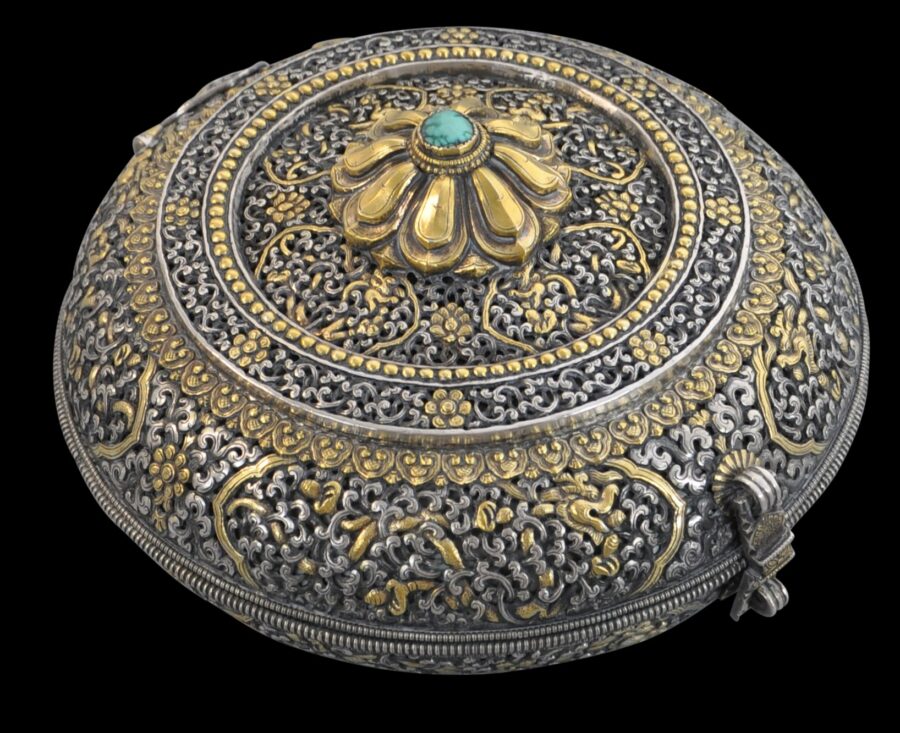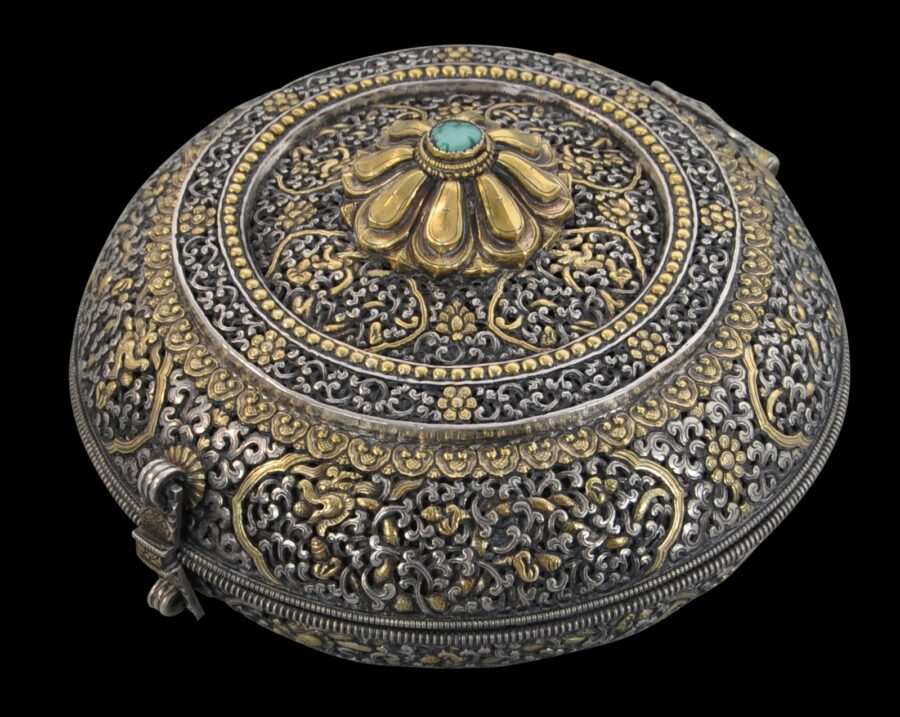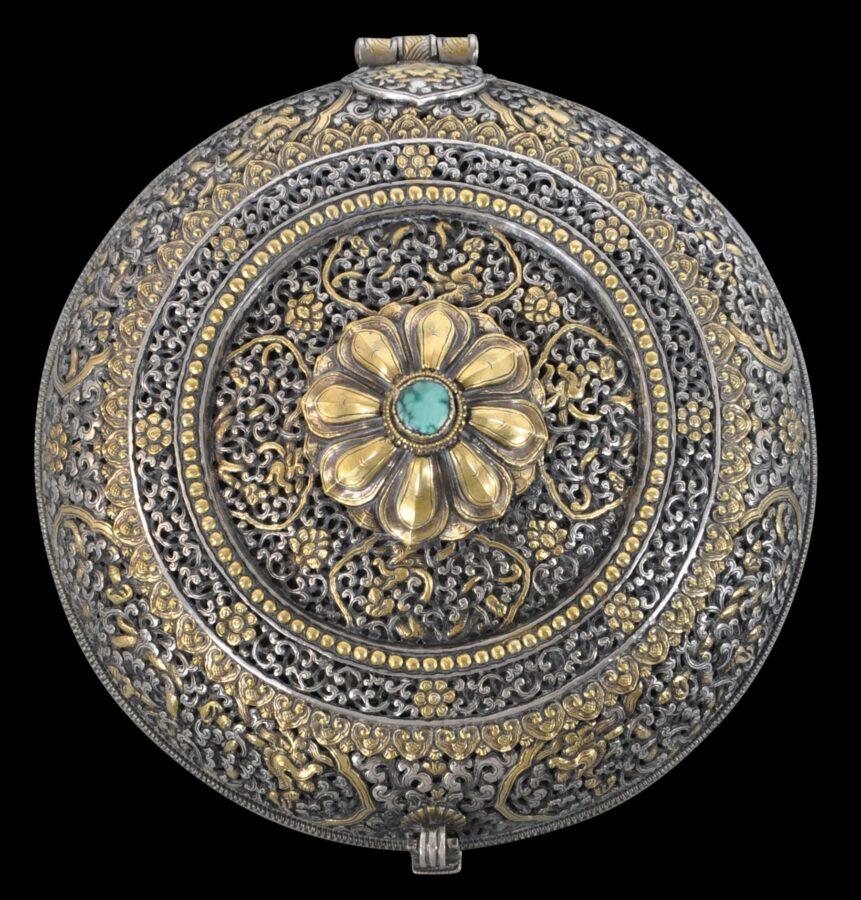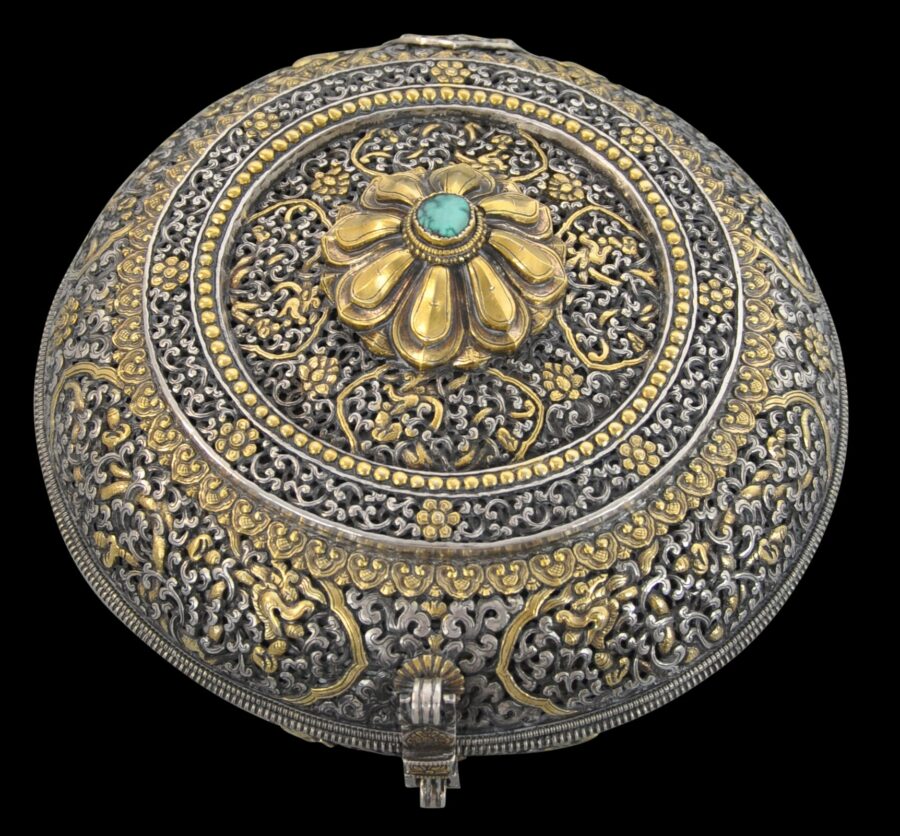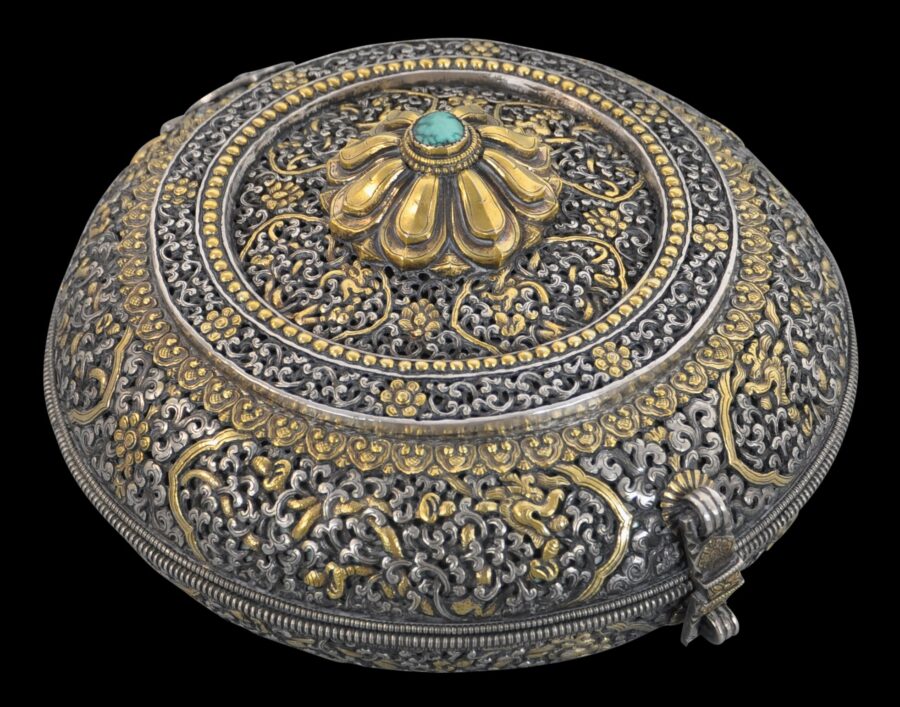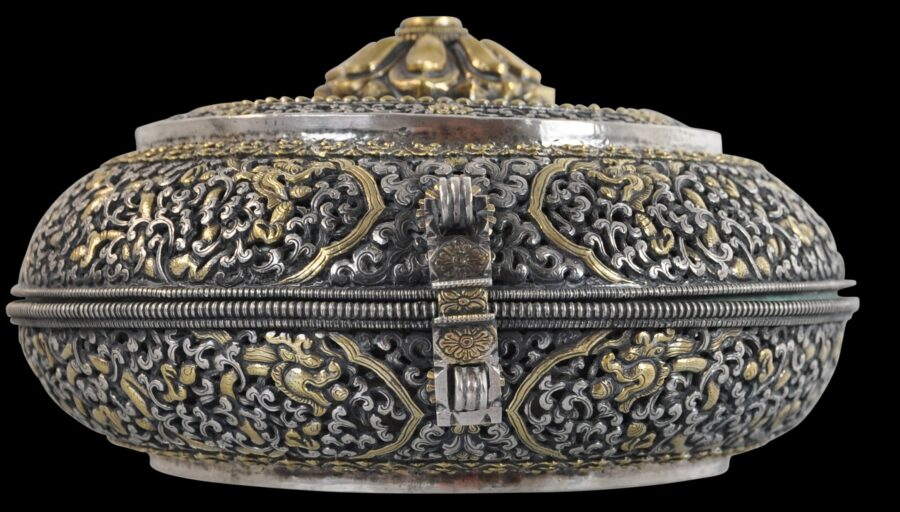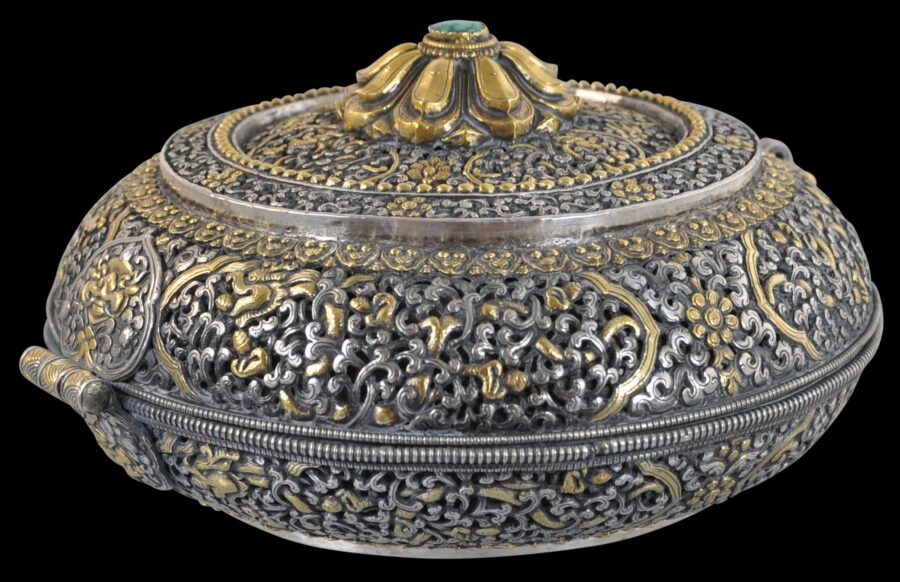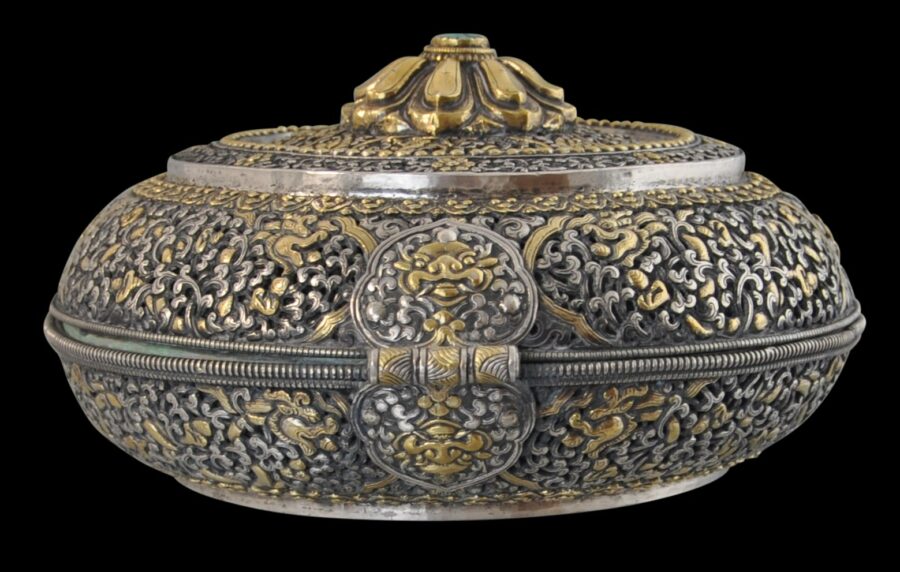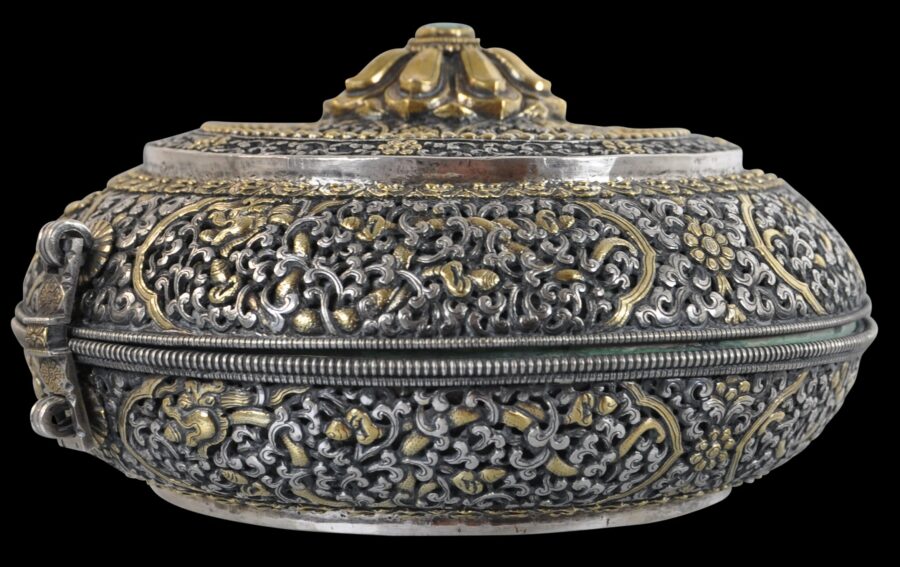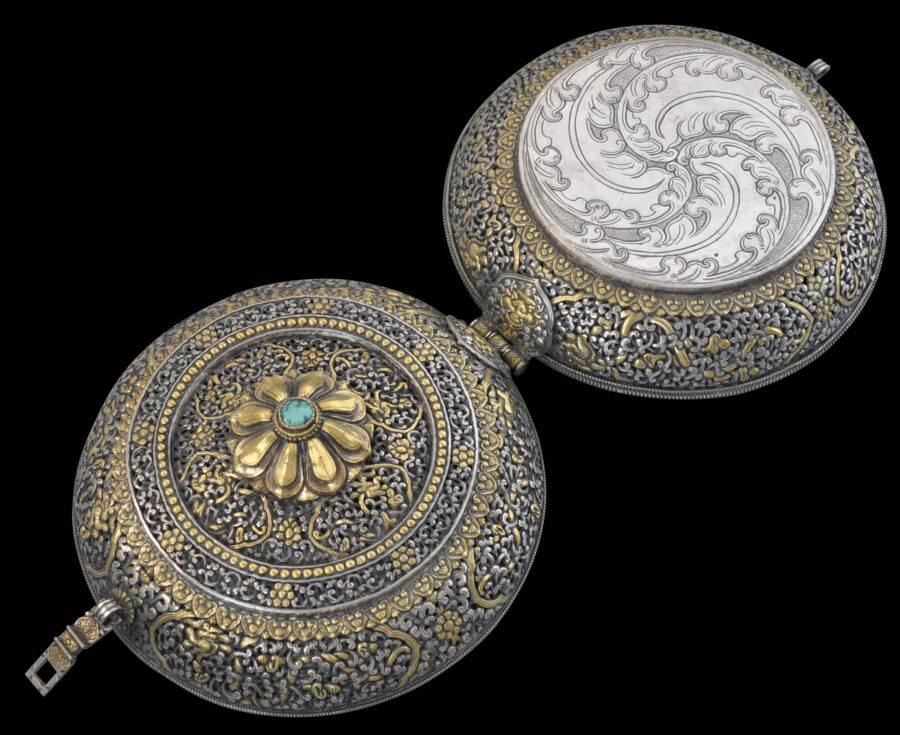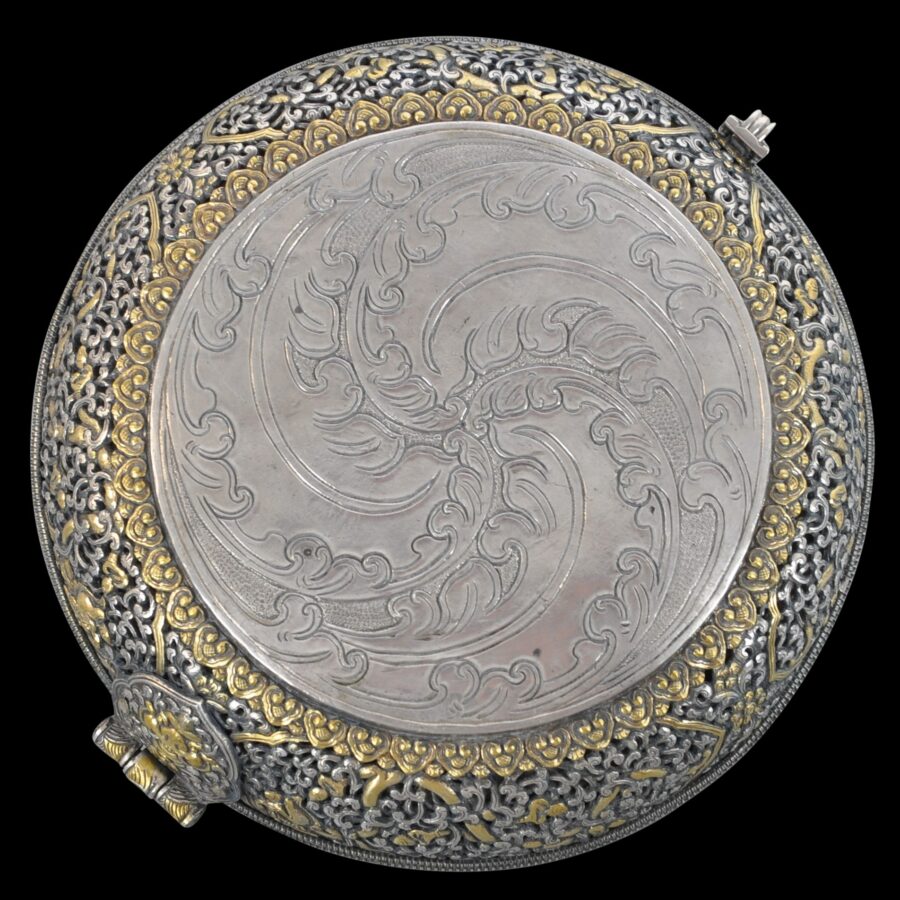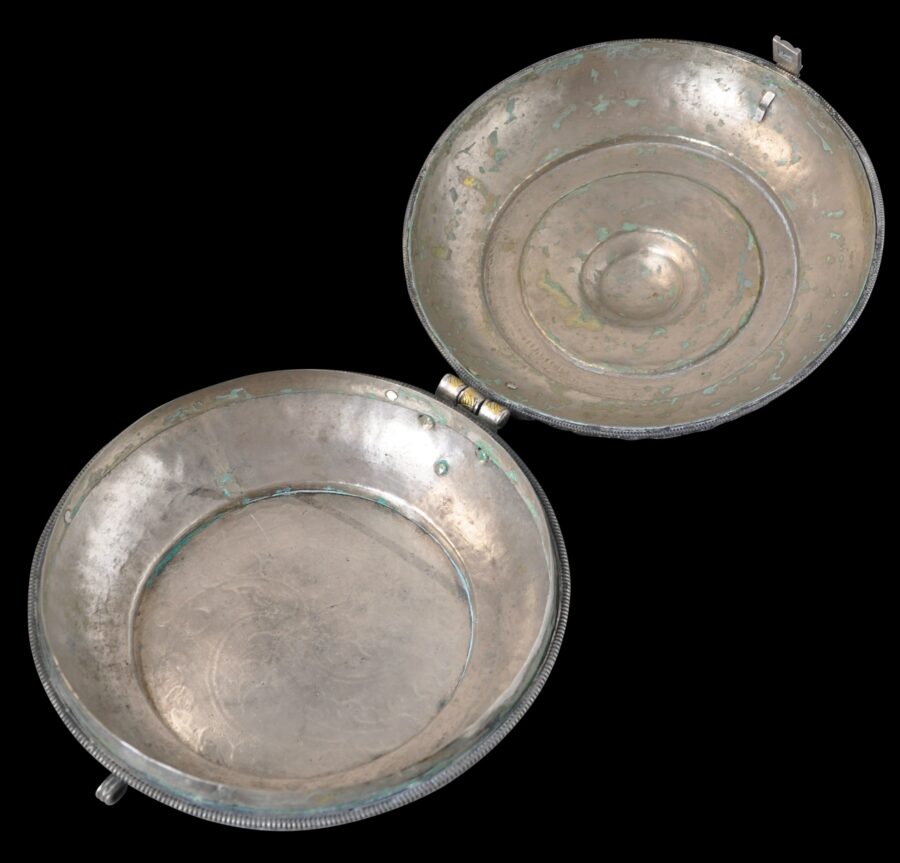This rare and elaborate box of flattened, spherical form – almost certainly a betel box for a Bhutanese aristocrat – is the finest example we have seen.
It is made of high-grade silver that has been intricately pierced, chased and parcel gilded. It comprises two halves that have been hinged together with the hinges and lock mounts engraved, chased and gilded, the hinge mounts being chased with kirtimukha masks. The pierced outer wall is backed underneath with another layer of silver to make the box airtight. The double walls makes the box unexpectedly heavy in the hand.
The lid has a large central lotus finial inset with a turquoise cabochon. The upper petals of the lotus have been gilded so that the gold provides a a pleasing contrast with the silver petals beneath.
The base and the sides of the cover are worked with some of the most exemplary silverwork that we have seen in Bhutanese art – with a series of thin-bodied, writhing dragons twisting through intricate and dense cartouches of Himalayan foliage.The bodies of each dragon have been gilded, as have other features, including petal and other borders which frame the scenes.
The base is flat and engraved with a swirling leafy motif.
It is likely that a box such as this was commissioned as a gift, perhaps as a diplomatic gift. It is also highly likely that they were not used for everyday use, if at all, and that they were stored in textiles sleeves to protect them.
The pierced, parcel-gilt silverwork on this box is very similar to that done on Bhutanese daggers made for aristocratic owners in the 18th century. It is likely that this box and those daggers were executed by the same silversmiths.
The form of the box seems based on that of the large Chinese cinnabar lacquer circular ‘Dragon’ boxes and covers, that date to the 18th century, and earlier. These too were given as diplomatic and other high level gifts by the Imperial Court in Beijing.
Such a box also appears to relate to elaborate iron examples that were used to hold and protect valuable jade and porcelain bowls that belonged to noblemen while they were travelling. See the Victoria & Albert Museum for an example. However, the V&A does have an example (significantly cruder, and which joined the collection in 1910) but of this precise form which it describes, without elaboration, as a ‘cake box’ – see that example. The V&A has other examples. One is described simply as a box. So is another example. But another is described as a cover for a bowl. Finally, another example which joined the collection in 1927 and which is attributed to Bhutan, 19th century or earlier, is described as a box for religious offerings.
An example of similar form but perhaps more clearly for the Bhutan market is illustrated in Schicklgruber & Pommaret (1997, p.213.) It is described as an ‘elaborate betel leaf and areca nut box (bata)…that would have been used by the nobility and clergy’.
Betel or paan was chewed in Bhutan as it was (and in some cases, still is) in India and Southeast Asia. The actual nut comes from a certain palm tree which was sliced, wrapped in a betel leaf along with powdered lime (usually obtained from crushed, burned seashells or coral) and chewed to give a mild narcotic effect.
The box here is in excellent condition. It is a remarkable, museum-worth example.
References
Laking, G.F., Oriental Arms and Armour: Wallace Collection Catalogues, 1964.
Myers, D., and S. Bean (eds), From the Land of the Thunder Dragon: Textile Arts of Bhutan, Serindia, 1994.
Schicklgruber, C., & F. Pommaret, Bhutan: Mountain Fortress of the Gods, Serindia Publications, 1997.


